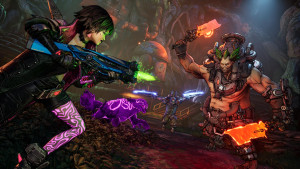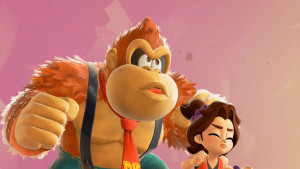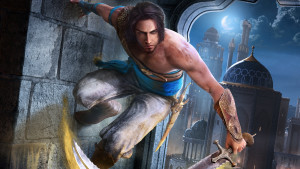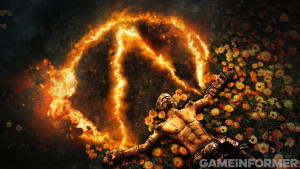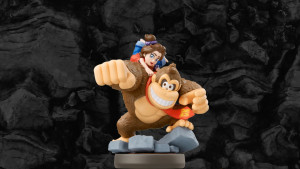The magazine is back. Get your subscription now!
How Devil May Cry Does Difficulty Right
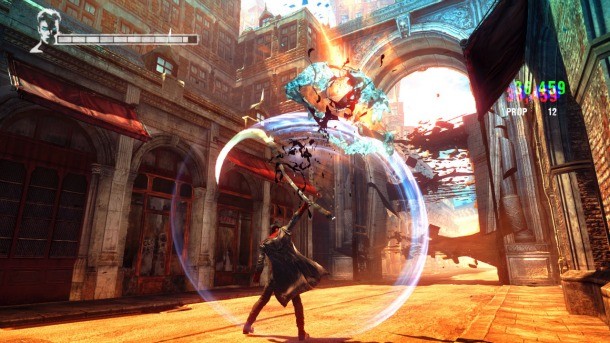
With few exceptions, I’m typically not the type of gamer to complete games on more than one or two different difficulties. I might do a quick second run to mop up some achievements or try a harder difficulty on games that I truly love, but the majority of games I play are “one and done.” Despite this, I wound up beating the new Devil May Cry seven times in two weeks. These playthroughs were in no way connected to work, as I purchased the game myself and continued to play it solely because of how much I was enjoying it. What makes DmC such an outlier when it comes to repeated playthroughs is how it handles different difficulty levels.
Most importantly, everything carries over everywhere. Every red orb you collect, every item you purchase, every new ability you unlock, and every collectible you find is reflected in each of the seven difficulty levels from Human (easy) to Hell and Hell.
Let’s take a look at how the difficulty breakdown goes:
- Human: Super easy.
- Devil Hunter: The default setting, but still a bit easy.
- Nephilim: Probably the best mode to start on if you've played a DMC game before.
- Son of Sparda: Unlockable after beating the game. Mixes up enemy waves and makes everything a bit harder.
- Dante Must Die!: Much harder, and introduces late-game enemies much earlier. The hardest non-gimmick difficulty.
- Heaven and Hell: Everything dies in one hit, including Dante.
- Hell and Hell: Super hard, and only Dante dies in one hit.
With such varied difficulty levels, it’s fun to plot out your course through the game. My suggestion is starting with Nephilim. It’s difficult enough to capture the traditional Devil May Cry feel, as Devil Hunter mode tends to be a bit too easy. If things get too hard on Nephilim, farming orbs and abilities is as easy as a quick downgrade to Human or Devil Hunter. Going back to Nephilim with an improved Dante is frequently all it takes to succeed where you previously failed.
Stockpiling orbs isn’t the only reason to revert to an easier difficulty level. Many Lost Souls, hidden keys, and secret areas are only accessible once you receive abilities from later in the game. Because of that, it’s not important to focus on finding them all on your first go-round. Finding all of them and getting the SSS ranking on each level is impossible on this initial run. Beat the game once, and then bump it down to Human for a collection run.
If you’ve done your initial run and the collection run, you’ve probably played enough and upgraded Dante enough to tackle the harder unlockable difficulties. Son of Sparda and Dante Must Die are no cakewalk at any level, but the experience and new combos that you’ve gained in the past will be of great help.
One of the best things about these difficulty levels is that many of them change the overall play experience. Dante Must Die isn’t a gimmicky mode, it’s just really hard. That’s why it’s so fun to go from that to Heaven and Hell, a gimmick mode that lets you fly through with guns blazing. Sure, Dante dies in one hit, but it’s still awesome to jump into the air and use your pistols to clear a room in a matter of seconds.
I didn’t feel like I played the same game seven times. My initial playthrough allowed me to experience the story and learn the mechanics for the first time. My second was like a giant Easter egg hunt, scouring each level for hidden goodies. My third was a challenging unlockable mode. After levelling Dante up all the way, I had a completely different experience when I got SSS rankings on every stage in Nephilim. Dante Must Die offers a feeling of triumph, while Heaven and Hell offers insane, gimmicky fun. By the time you finish the crazy-hard Hell and Hell mode, you feel like you just finished several completely different experiences with the same title.
Instead of simply making Dante weaker or his enemies more difficult, Devil May Cry does a great job of giving incentive for multiple playthroughs. If it handled difficulty like most games, I would have been done after seeing the credits once or twice. Because of how well Ninja Theory structured the difficulty system, I found myself having seven very different, yet still very enjoyable experiences.
